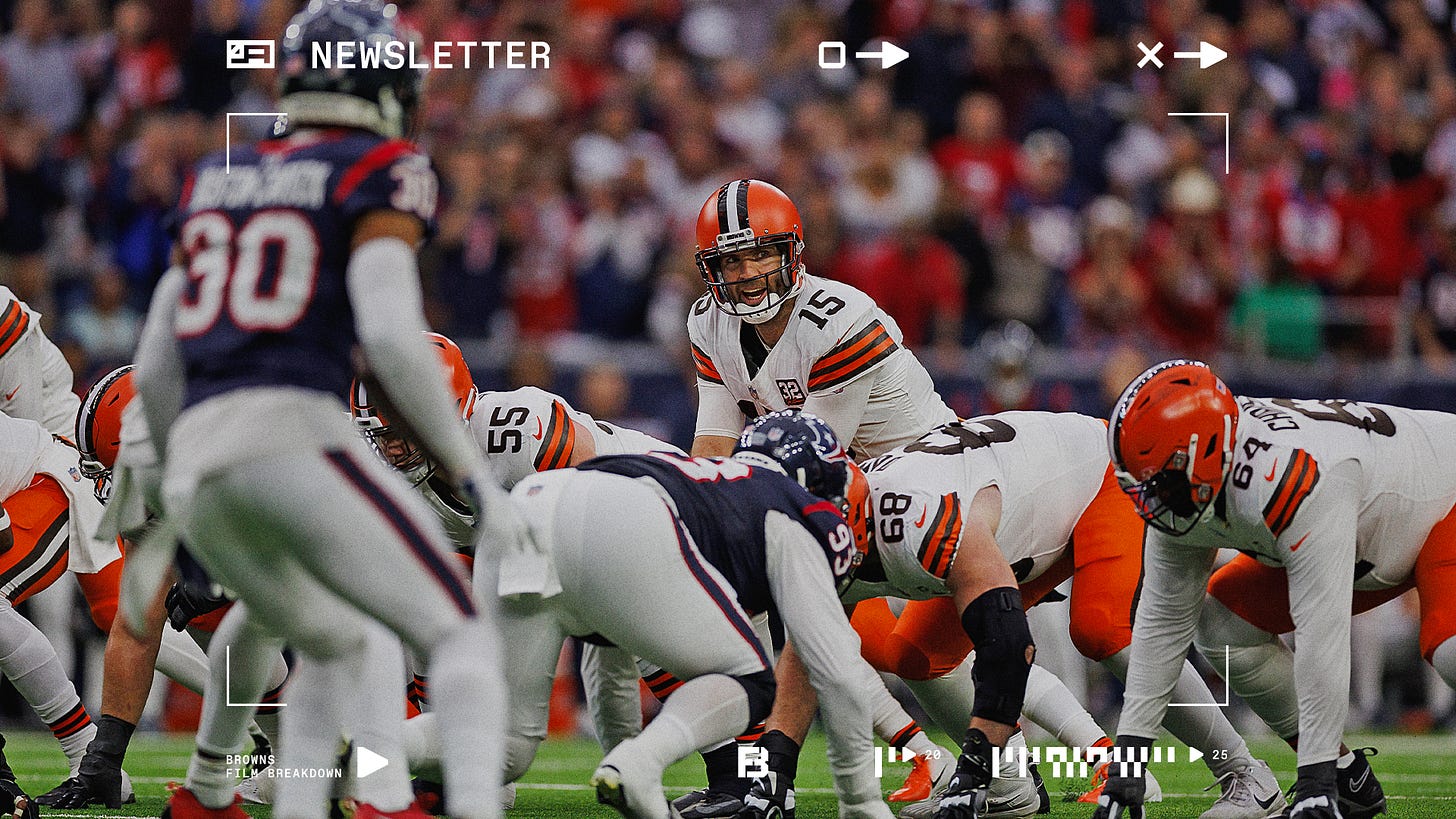Newsletter: The "Tush Push" Lives and How the Browns Navigate the Short Yardage Tool
There's some surprising data and varying approaches on the popular topic.

The NFL owners got together once again to discuss topics they didn’t get resolved from owner’s meetings just last month. These guys love meeting. Two key issues were on the table. The first was the Lion’s proposal for a playoff seeding restructure to eliminate division winners getting an automatic home game, and the second topic was the Packer’s proposal to ban the popular “tush push” concept becoming attached to the Eagles specific approach. Both of the proposals failed as the Lions withdrew their proposal for reseeding and the Packers failed to get the 24 needed votes to reverse the current course losing out 22-10.
We’re all tired of hearing about the “tush push” buzz phrase as it feels like the NFL has had the issue circled for years, but it’s apparent the process used in Philadelphia isn’t going anywhere and it interested me to see how it all matters to the Browns. On a good note, the Browns were one of the 10 franchises that voted to keep the play legal as it currently stands in the rule book. The league proposal was focused on a more broad application of offensive players assisting teammates by pushing or pulling the ball carrier. But it also had some specific language that landed precisely on how the Eagles approach.
Just yesterday the proposal was updated to eliminate the Eagles’ specific language of interlocking (crossed out above) and revert the rule back to the form it was before 2005. To make it simple, the proposal was that teammates cannot aid the runner by pushing or pulling him forward. That’s it. I know there are still some Notre Dame fans out there upset about the original push debate when Reggie Bush helped Matt Leinart over the goal line in that historic game in South Bend.
Ironically the NFL updated its language around the same time as that iconic college football game because the rule was next to impossible to officiate. It was rarely called and the league’s choice was about removing any confusing areas inside the application. Despite the rule being in place until 2005, the last time the league applied the 10-yard penalty in a game was 1991. So, you can see why this issue is meaningful in this scenario — specifically trying to place a tricky rule back inside a game that is already tougher than ever to officiate.
But what caught me off guard about the 2024 push results, and teams in those short yardage spots, is that Philadelphia wasn’t overwhelmingly more successful in those scenarios than their peers.
Across the NFL the concept is far less prevalent than you would think based on this rule initiative. In 2024, the Eagles used the concept on just 42 snaps of 1 yard to gain for the first down according to TruMedia. They didn’t use it in the regular season for any situation calling for more than one yard to gain but they had a few snaps result in more than one yard gained with the most on one snap being five yards gained. A large majority just met the one yard standard, though.
The biggest difference is that the Eagles are just plain brazen about it. They do not care if you know what’s coming. That’s the unique aspect.
You can see how their approach to the concept is unique with four-point stances, extremely tight splits, and two players in the backfield compressed to the quarterback ready to push immediately. They don’t fake any other concept coming but the push and defenses know it. The defense gets tight to the line and condenses down as well. It’s unique, no doubt.
But it is not automatic despite what the NFL is selling here. The Eagles used the “tush push” on 42 snaps and had eight instances where they failed to gain the necessary yard. The Bills had the second highest volume of any “sneak” variety with 28 uses and had 23 of them convert into a first down or touchdown. They also had their own approach to the sneak with a single running back tight to the quarterback and ready to push instead of the Eagles two-man approach.
Keep reading with a 7-day free trial
Subscribe to Browns Film Breakdown to keep reading this post and get 7 days of free access to the full post archives.





